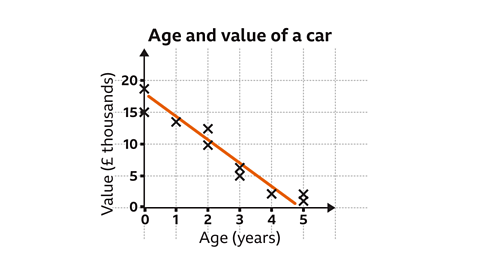Key points
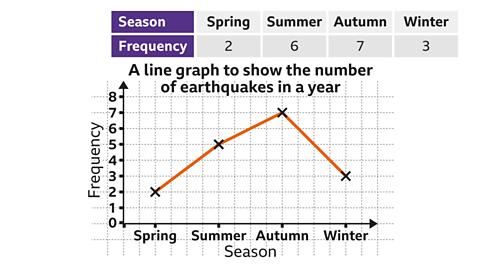
- A line graph is a type of graph used to spot trendA pattern in data. in data over time, eg hours in a day or months in a year. The data points are joined together by line segmentA specific part of a line between two points..
- In a line chart the frequencyThe number of times something occurs. is usually represented on the verticalA line that is perpendicular to the horizon. scale. The labelling on the horizontalA line that is parallel to the horizon. scale represents the increments of time.
- Some line graphs use a false origin. A false origin allows the vertical scale to start at a different value.

How to create a line graph
In order to produce a line graph, data is required. The data often comes in the form of a table.
To create a line graph:
- Look for the largest frequency in your table.
- Draw a vertical axisThe line on a graph that runs vertically (up-down) from the origin. on your square paper or graph paper.
- Choose an appropriate scale for this axis and label your axis up to the largest frequency.
- Look at how many subdivisions are needed for the horizontal axisThe line on a graph that runs horizontally (left-right) from the origin. .
- Draw and label the horizontal axis.
- Plot each data point, based on the frequencies and time intervals.
- Join each data point to the next, using straight lines.
- Check you have labelled each axis correctly, and give your line graph a title.
Examples
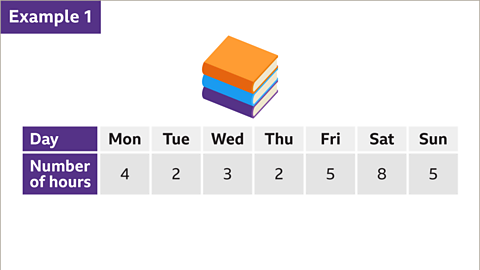
Image caption, A student recorded how much time they spent reading during a week. The table shows the results. Construct a line graph to represent the data.
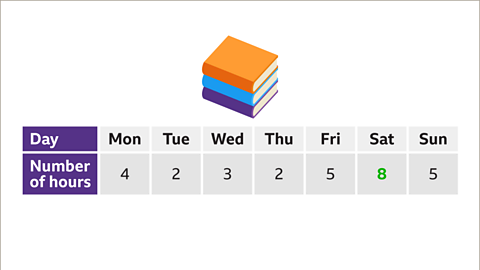
Image caption, First, identify the largest frequency. The largest frequency is 8. The vertical scale must go up to at least 8

Image caption, Draw the vertical scale and number it in regular intervals. In this example, the scale is increasing in increments of one hour. The label for the vertical axis is the frequency, or in this example, the number of hours.

Image caption, The horizontal axis needs to be labelled with the unit of time. In this example, the scale is days of the week. Unlike a bar chart, the labels go on the lines, not in the spaces.
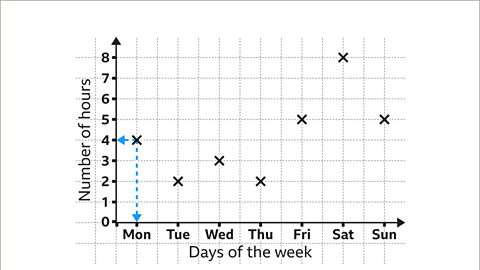
Image caption, Draw each data point in the correct place and mark it with a cross. For example, Monday is 4 hours. The cross should be vertically above Monday and horizontally in line with the 4 on the vertical axis.
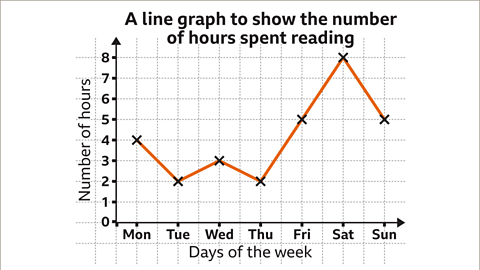
Image caption, Finally, join the data points with straight lines and give the graph an appropriate title.

Image caption, It is also possible to read data points and make comparisons using a line graph. This line graph represents the average temperature during a year in Greece.
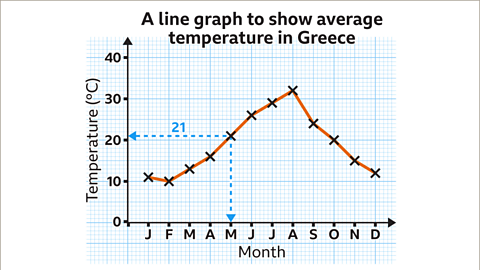
Image caption, Using the vertical scale, the temperature of each data point can be read. The scale is going up in increments of 10. Between each multiple of 10 is ten subdivisions. Each subdivision is worth 1°C. The average temperature in May is 21°C.
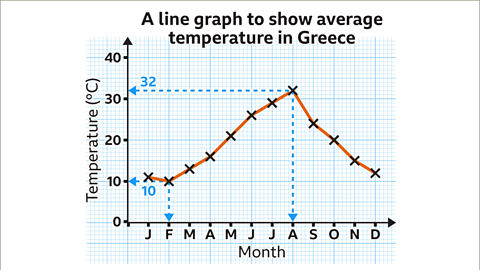
Image caption, By finding the difference between the highest and lowest temperatures the range can be found. The hottest month is August with an average temperature of 32°C. The coldest month is February with an average temperature of 10°C. Range = 32 – 10 = 22. The range is 22°C.
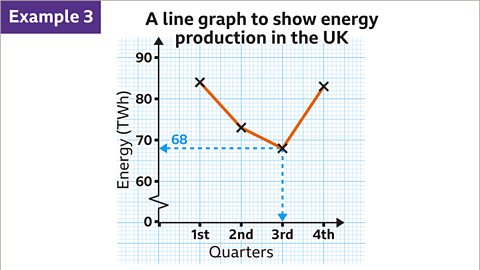
Image caption, This line graph shows the electricity production in the UK each quarter. A false origin has been used on the vertical scale, allowing it to start at a different value. The scale is going up in increments of 10. Between each multiple of 10 is ten subdivisions. Each subdivision is worth 1 TWh (Terawatt hour). The least energy, 68 TWh, was produced in the third quarter.
1 of 10
Question
The line graph below shows the number of parcel deliveries completed on each day of the week.
How many parcels were delivered on Wednesday?

The number of parcels delivered on Wednesday is 102
A false origin has been used on the vertical scale.
The scale is going up in increments of 20
Between each multiple of 20 is ten subdivisions.
Each subdivision is worth two parcels.

Practise comparing and interpreting line graphs
Practise comparing and interpreting line graphs with this quiz. You may need paper and a pen to help you.
Quiz
Real-life maths

An investorAn investor is a person who puts money (capital) into something with the expectation of a future financial return. might use line graphs to track the value of companies over time.
By watching the rise and fall in a company’s share valueA share is a small part or unit of the value of a company. they might be able to work out a good time to buy and sell shares in order to get the best return.

Game - Divided Islands
Play the Divided Islands game! gamePlay the Divided Islands game!
Using your maths skills, help to build bridges and bring light back to the islands in this free game from BBC Bitesize.

More on Representing data
Find out more by working through a topic
- count3 of 6
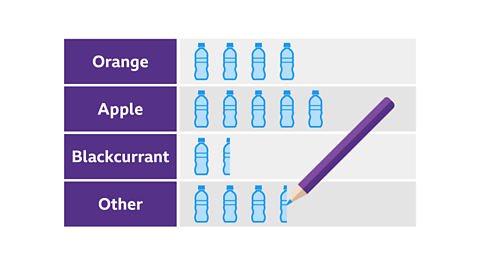
- count4 of 6

- count5 of 6

- count6 of 6
